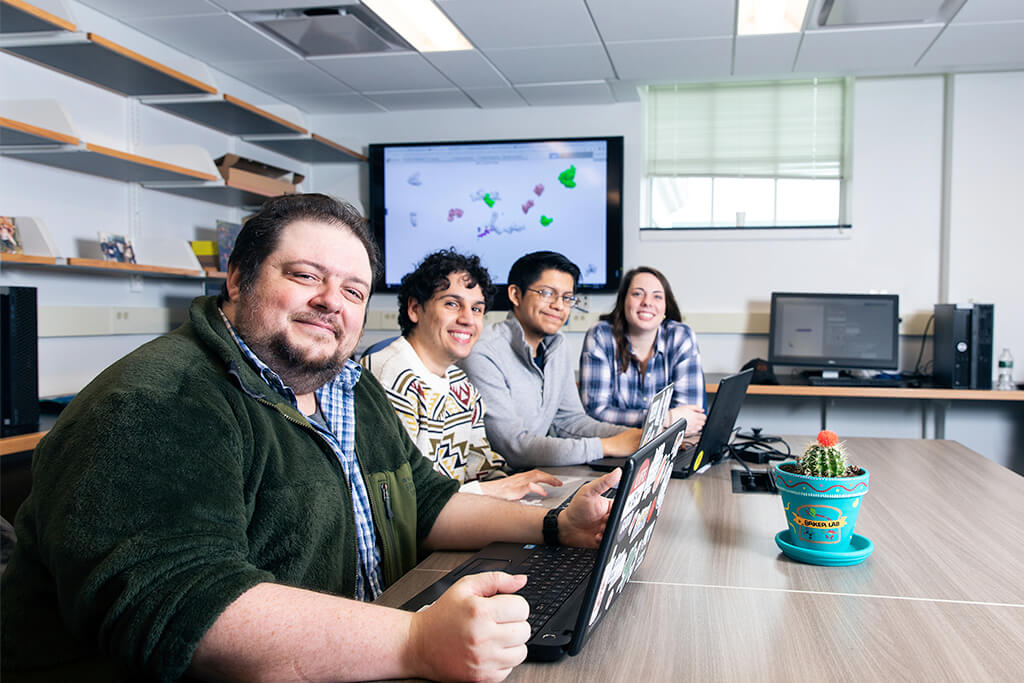
If you’ve ever needed antibiotics, you’re familiar with the destructive power of bacterial cells. Bacteria can accumulate on everyday surfaces and cause illnesses from strep throat to pneumonia.
With their amazing powers of adhesion, these cells can cling to surfaces, join together to form colonies, and even move around. Hair-like appendages made of proteins — called type IV pili — extend from the bacterial cell, grab onto surfaces and then contract, pulling the cell forward like a grappling hook.
Joseph Baker, associate professor of chemistry, is taking a closer look at these grappling hooks in order to better understand their role in the infection process. His research could help uncover revolutionary new medical treatments.
A physicist by training, Baker has worked in the chemistry field since receiving his PhD from the University of Arizona in 2011. “With my physics background, the way that I try to understand these protein systems is from a model-based approach,” he says.
Now, with help from TCNJ’s Electronic Laboratory for Science and Analysis (a high-performance computing cluster affectionately known as ELSA), Baker and his team of TCNJ students (nearly 20 over the last five years) are using a computational method called “molecular dynamics simulation” to analyze the movements of the pili. This method works by calculating the interactions between atoms in the simulated system (in some cases hundreds of thousands or millions of atoms) and then using Newton’s laws of motion to determine how the pili moves through time, essentially creating a movie of the molecular motion.
Specifically, Baker is interested in understanding how type IV pili respond to tension forces. As the grappling hook stretches and grabs onto a new surface, its structure changes.
“It’s like taking a string and pulling on it. The string will stretch a bit and so will type IV pili when they are pulled on,” says Baker.
Understanding these structural changes could have groundbreaking practical implications. Researchers could theoretically develop a molecule that would sever the pili during adhesion, preventing bacterial infection.
Baker’s research could have another important application: drug delivery. Hollowed out pili could act like nanotubes — similar to a straw that is thousands of times thinner than human hair — aiding in the transport of drug molecules into infected or cancerous cells and potentially helping to combat disease.
With his simulations, Baker will explore the kinds of molecules that could move through these hollow structures, and investigate their application as novel nanoscale biomaterial devices.
With support from the Gitenstein-Hart Sabbatical Prize, Baker will spend his sabbatical year at Northern Arizona University working with his theory collaborator and others at the university’s Center for Materials Interfaces in Research and Applications, to further develop his research.
— Sarah Voorhees ’20
